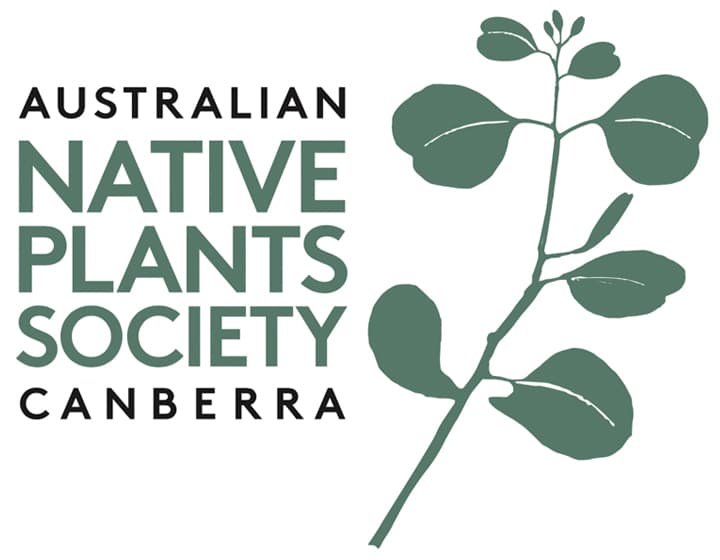A Wander in the Goulburn Wetlands
By Lyndal Thorburn, including words and photos
Feb, 2024
In November 2023 Tom Jordan and I attended the Australian Plants Society NSW meeting in Goulburn. Part of the weekend’s activities included a tour of the Goulburn Wetlands. This article summarises our visit and the background to the recent native plantings at the site.
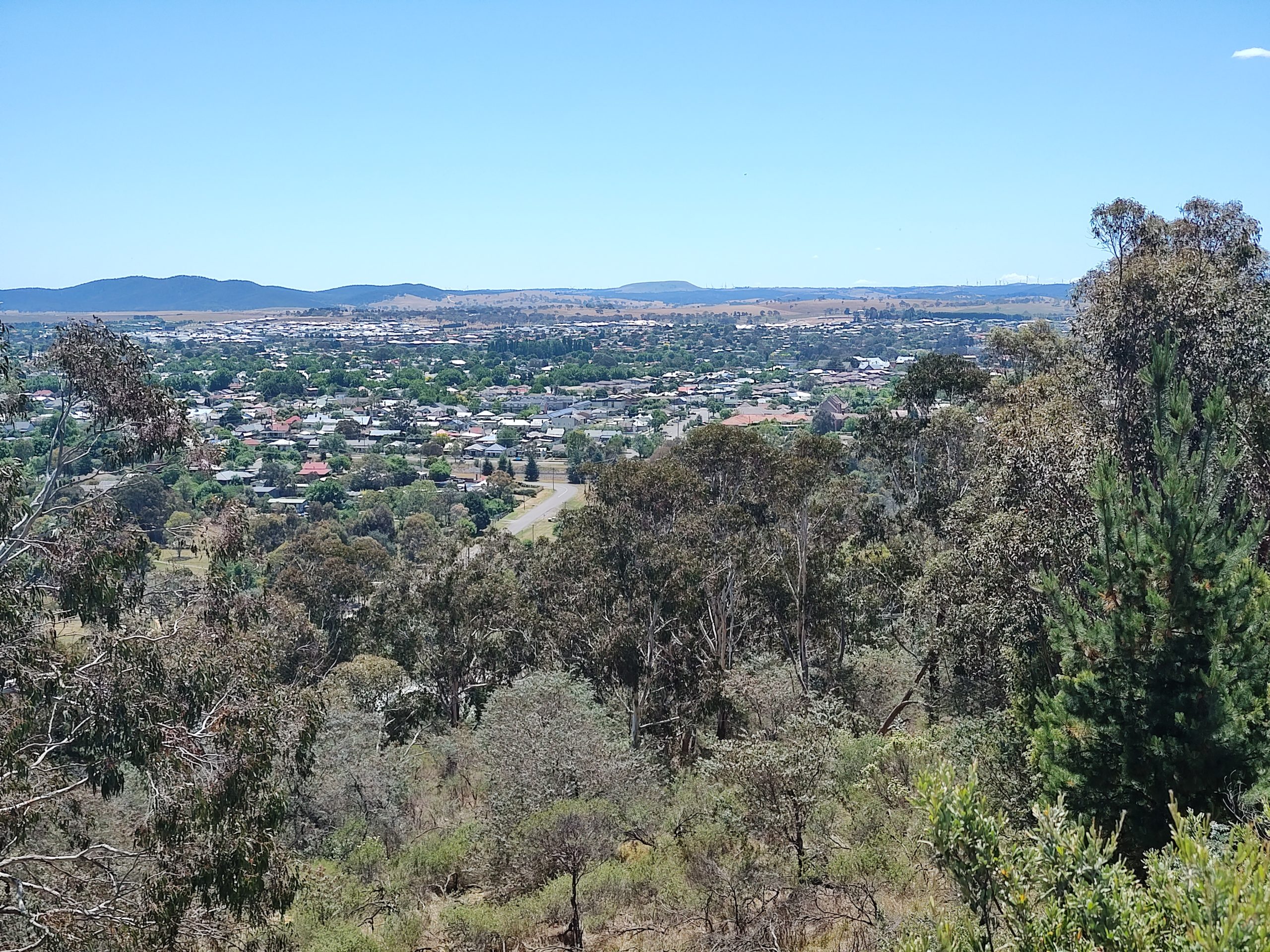
View of Goulburn from Rocky Hill
The Wetlands are located at 139 May St, Goulburn, on the east side of the Sydney–Canberra railway line and west of (and below) the Rocky Hill War Memorial. The site is also adjacent to the Goulburn Golf Course. Its northern boundary is the Mulwaree River, which runs into the Wollondilly further north. In 1863, the Stubbings family, who also lived along May St founded a claypit and brickworks on the site (History plaque at the wetlands site, and the www.facebook.com Goulburn History group).
Tom recalls the wetlands area being covered in weeds during his childhood in Goulburn in the 1960s, so the Stubbings Brickworks must have closed soon after WWII. It remained derelict until The Goulburn Group, which was founded in 2007, submitted a proposal in 2010 to the Goulburn Mulwaree Council to establish a wetlands (https://www.goulburngroup.com.au pg 177 and pg 346). In response to this proposal, the Council established Wetlands Working Group to progress the idea.
Major works commenced in 2010 and were mostly completed by 2012. These were funded by grants, as well as volunteer work, primarily by The Goulburn Group, the (then) Society for Growing Australian Plants — Southern Tablelands (now APS NSW ST), and The Friends and Residents of Goulburn’s Swamplands Landcare Inc (FROGS Landcare). Other groups which were involved in community consultation included TAFE, Mission Australia and the Middle Arm Bush Fire Brigade and others. Works included construction of rock walls to capture, direct and retain water for wildlife, a network of walking and cycling paths and bird hides; turfing; and production of interpretive signs about the site’s flora, fauna and historical uses. Now, APS propagates the plants, FROGS does most of the volunteer work, and Pauline Husen from APS, who was also our guide, looks after the wetlands gardens, which are separate to the landcare project.
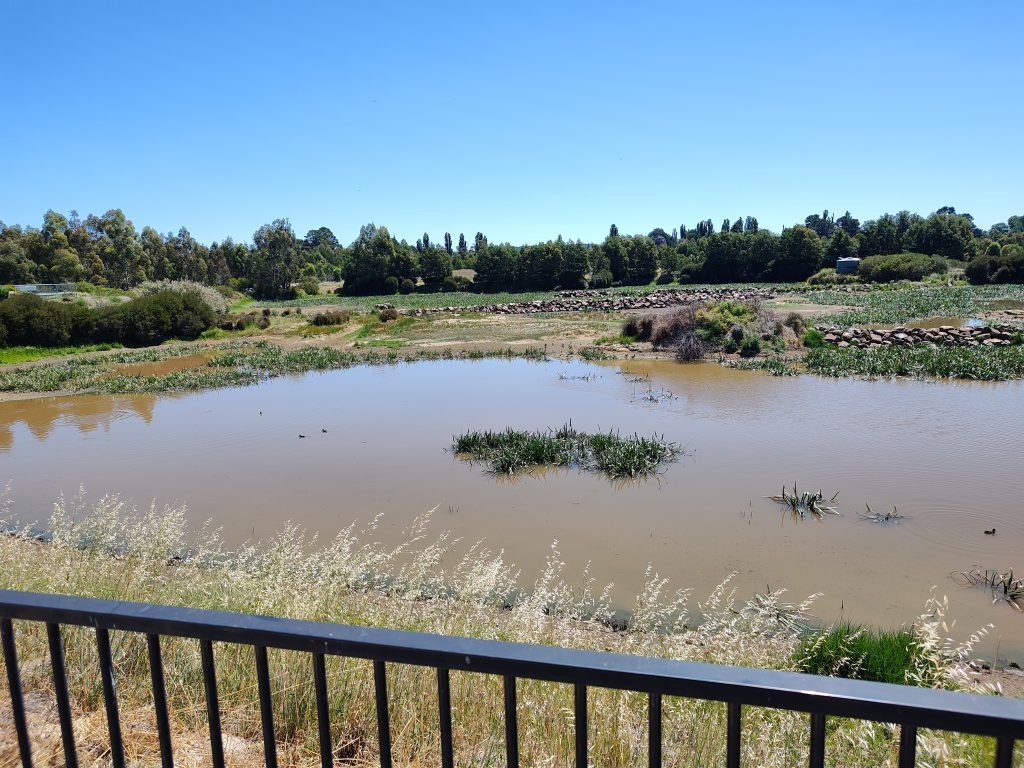
Our visit focussed on the landscaped areas south of the actual wetlands, where footpaths and tables made it an attractive area for walkers and picnickers (though not on the day we visited, which was really hot!). This west facing slope was first planted in 2015. The plants were chosen to grow in the poor, rocky soil, and to withstand both the very dry hot summers and the cold winters. APS NSW decided to plant native species that aren’t necessarily native to the Goulburn region because the aim of this garden is to encourage locals to plant natives in their own gardens. The plants chosen need to have general appeal and hence be attractive as well as functional and hardy.
This changed what could be grown successfully in this part of the site and the group has since installed logs and hessian bolsters to slow the flow of water over the ground and to stop the mulch being swept away. They have replanted using more grasses, which are more likely to survive occasional inundation.
The main species near here are Banksia blechnifolia and B. spinulosa hybrids, including HoneyPots, Birthday Candles, Little Eric, Giant Candles, Black Magic and Honey Eaters’ Delight. There are also B. paludosa, B. oblongifolia, B. robur and B. regnans.
This area was also dotted with feature plants including Acacia howittii (Victoria), Homoranthus prolixus (syn H. flavescens, inland northern NSW), Kunzea ambigua (local), K. pomifera (Muntries, from Victoria and SA), and Pelargonium rodneyanum (coastal NSW). The group had also planted native daisies (Rhodanthe chlorocephalus ssp. rosea (WA and SA) and Leucochrysum albicans (collected locally) in a gravelly area near the entrance off May St, and there was a gorgeous Petrophile canescens (inland NSW, as far south as Nerriga) in full flower as well. A Banksia repens (WA) has also survived sheltering under other plants and next to some waste bricks, which provide thermal mass. Trials with Hakea Burrendong Beauty cv. were unsuccessful (it died in winter) and the beautiful and very large Hakea petiolaris (WA) succumbed to the flooding mentioned above.
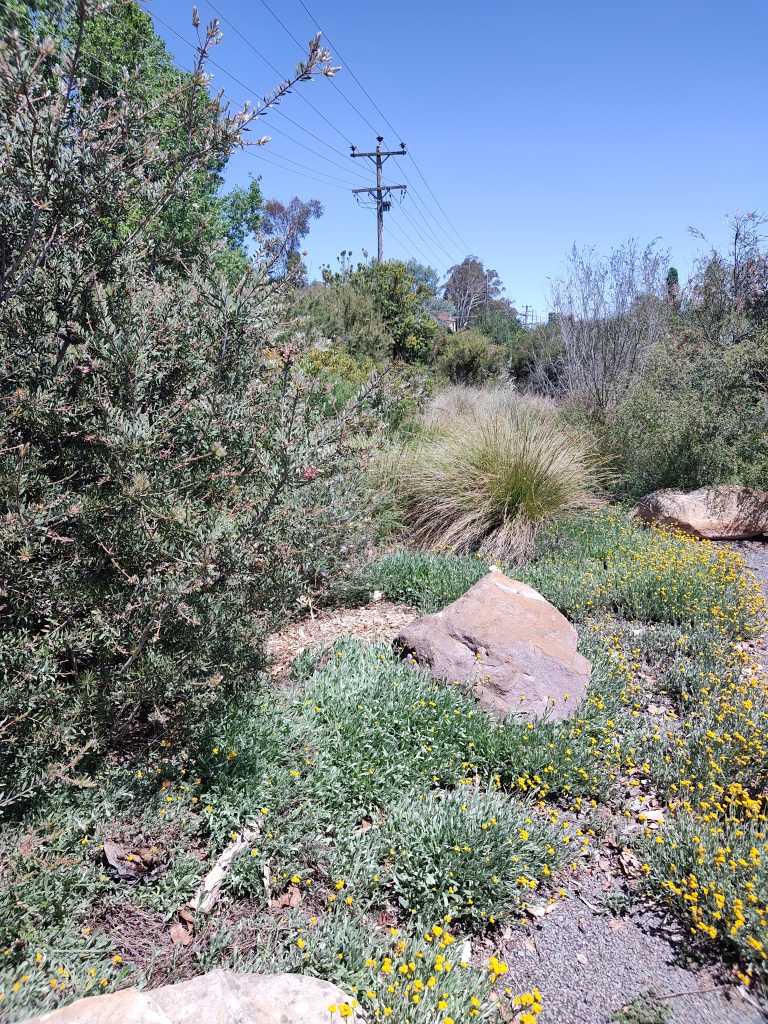
Chrysocephalum
Petrophile canescens
View from paths looking north towards wetlandsTowards the rear of these plantings are taller shrubs including Solanum aviculare (local, in flower), Callistemon sieberi (coastal NSW and Victoria), Banksia marginata (inland and coastal NSW), and both Dianella longifolia (widespread in NSW) and Thelionema grande (inland northern NSW). Eucalyptus melliodora (local) will eventually shade this area.

Thelionema grande and Banksia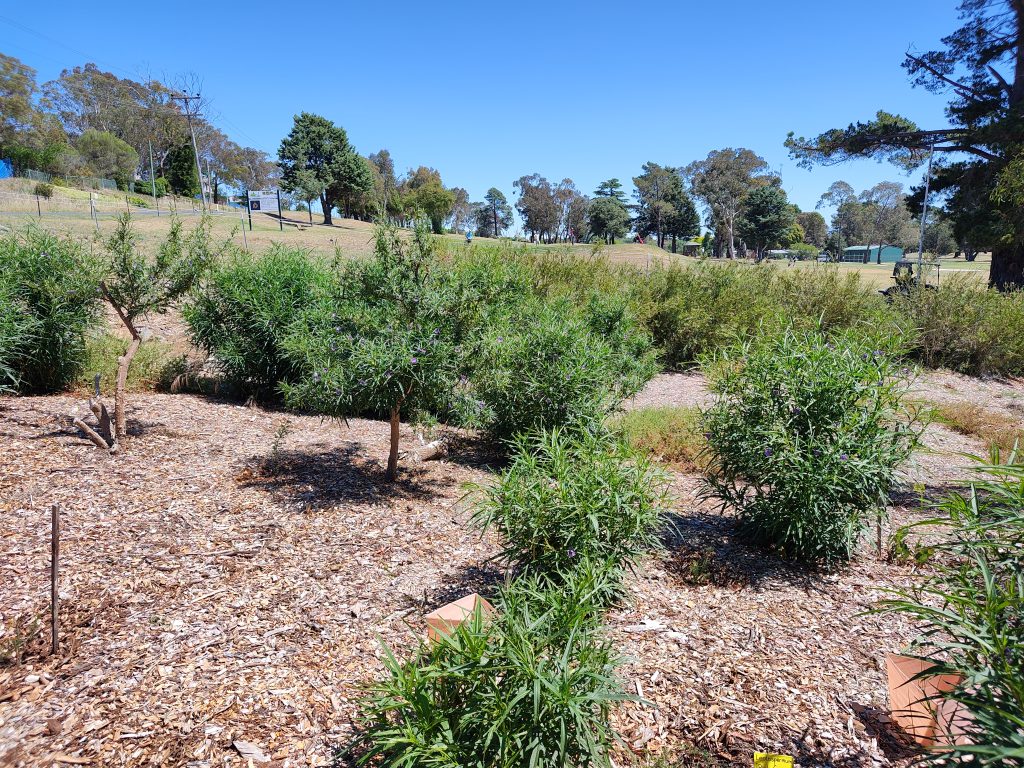
Solanum aviculare
Along May St on the wetlands side of the fence was a dense planting of medium shrubs (e.g. Banksia spinulosa and B. marginata), interspersed with Lomandra longifolia. Further north along May St are many Hakea sericea and H. teretifolia – the latter in full flower and most attractive to local bees at the time we visited. Both are very prickly and are drought hardy.
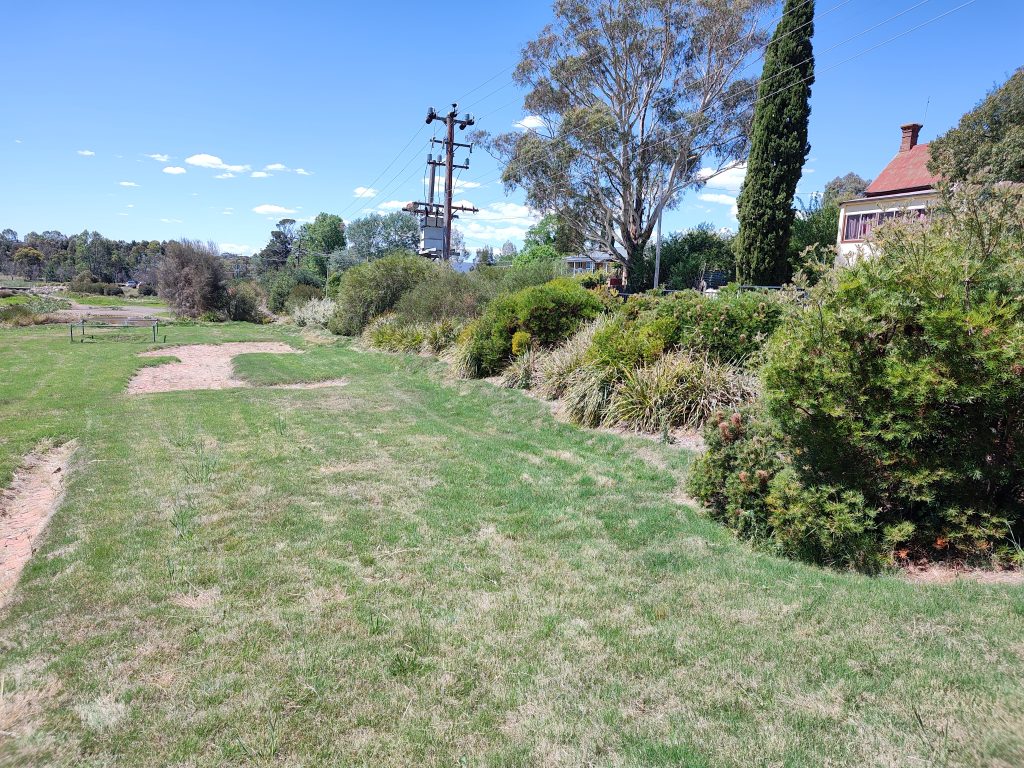
Wetlands side of May St fence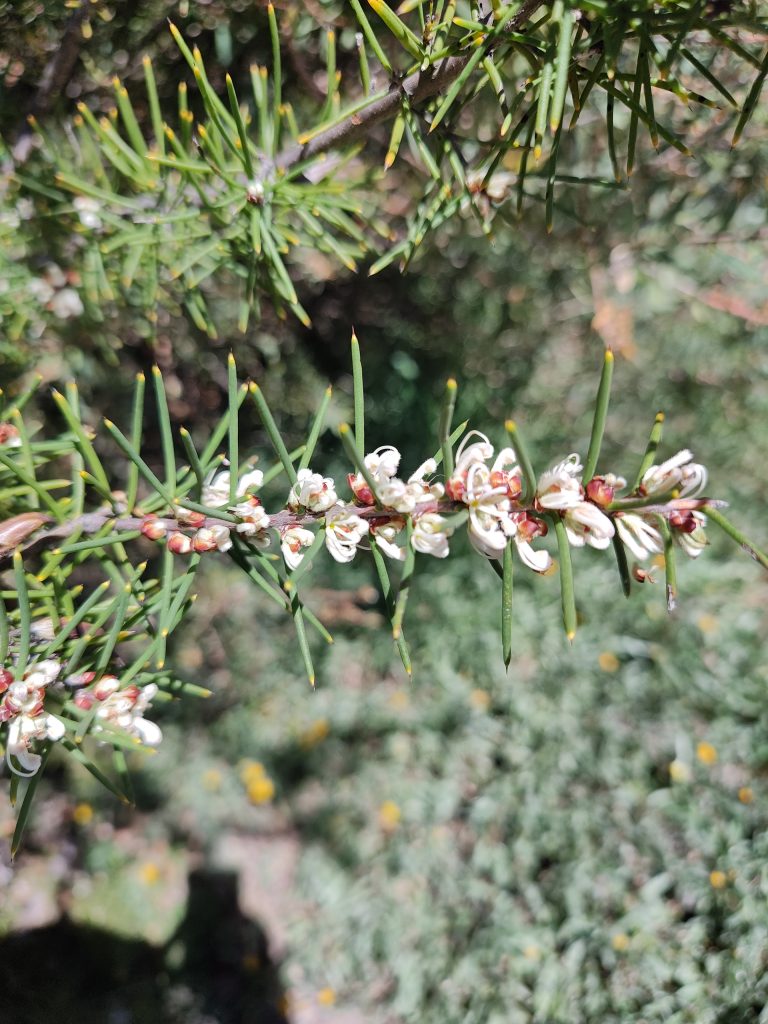
Hakea teretifolia 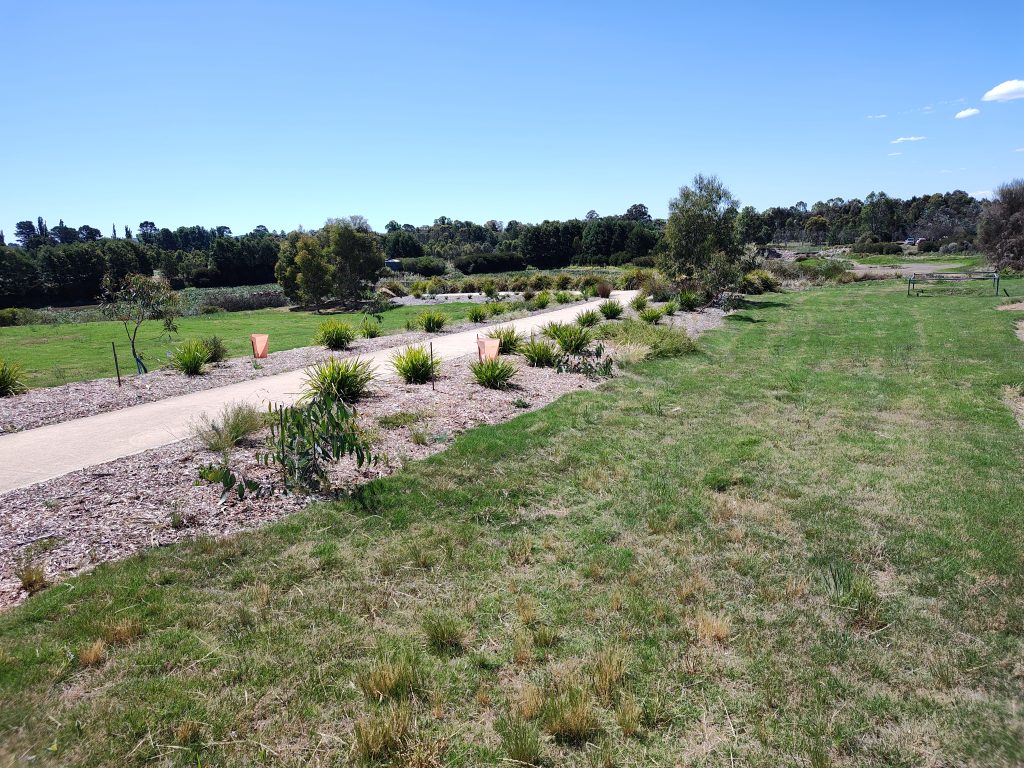
Lomandra along pathLomandra longifolia was also used liberally along one of the main paths heading towards the water.
We didn’t walk all the way around the wetlands on the day, because of the heat, but we plan to visit again when next in Goulburn and hopefully also see some of the 146 species of birds that have been recorded there since the wetlands opened (https://ebird.org/hotspot/L2557641). It is well worth a visit!
Back to Articles List
